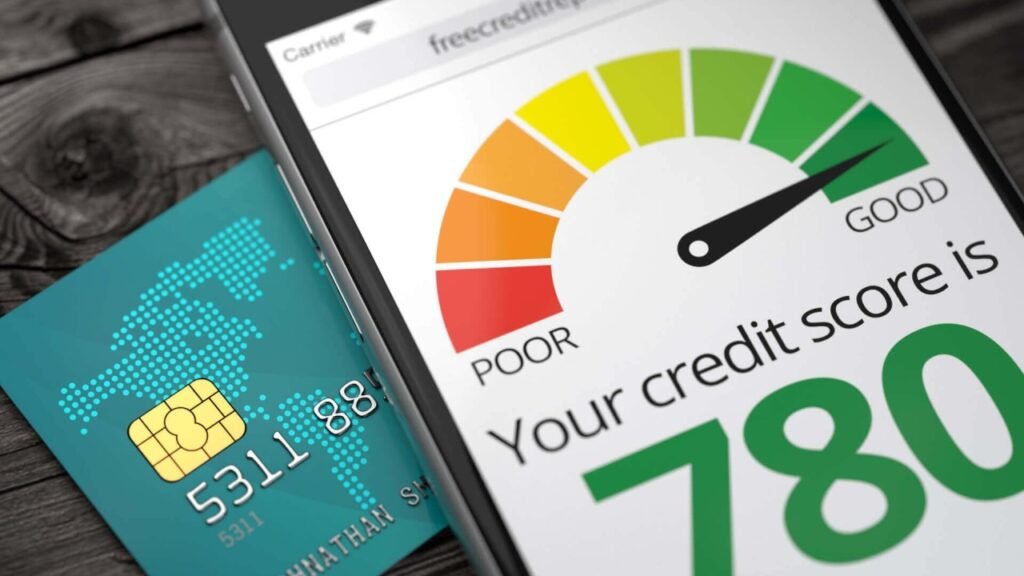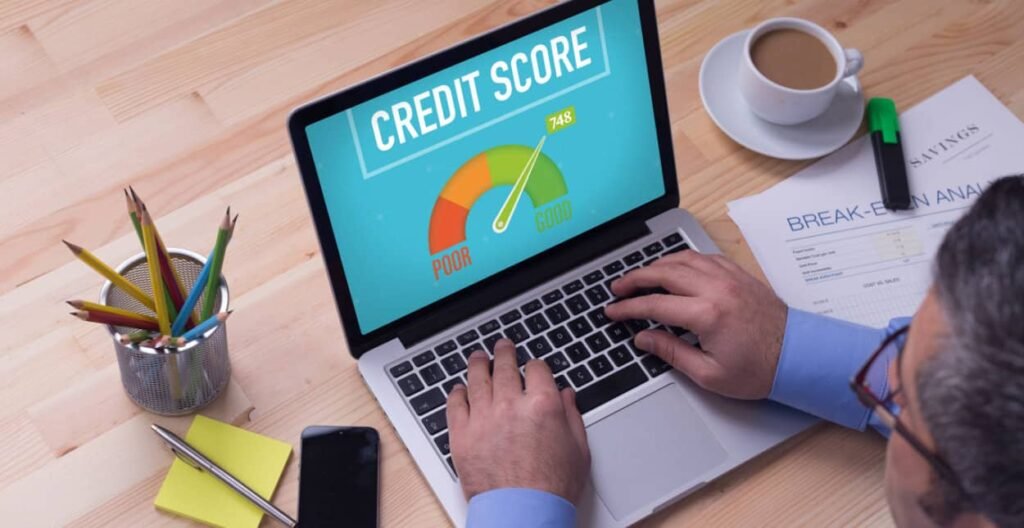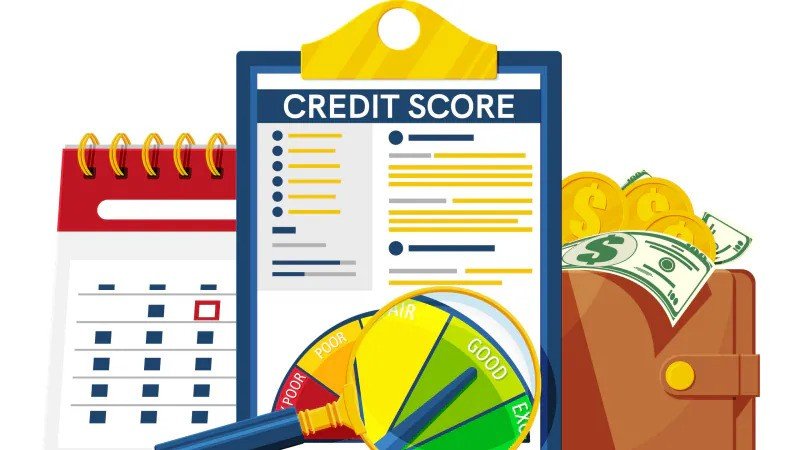Discover the interesting history of credit scoring. We will look at how credit evaluation methods have changed over time. Before the 1900s, these methods were very simple. Now, we use advanced algorithms in our digital age. This journey shows how the way we assess credit has become more complex. It also shows the importance of data analysis and financial risk checking. Join us to learn about the origins of modern credit scoring and how it affects the global financial world.

The Origins of Credit Reporting
Credit reporting began before the 1900s. During this time, people started to evaluate credit in new ways. This was an important change that led to modern credit methods.
The concept before the 1900s
Before the 1900s, there was no formal credit scoring system. Lenders used personal knowledge or informal references to judge borrowers. They mainly focused on moral character and the reputation of individuals to decide if they were trustworthy. There was no standard method or objective data, which made assessing commercial credit reporting and credit risk inconsistent.
This time marked the beginning of a long history of major change toward the establishment of organized credit scoring systems, including the first credit bureau, which we depend on today for financial evaluations.
Early forms of credit evaluation
Before the 1900s, credit evaluation mainly depended on personal ties and how a borrower was seen in small communities, including insights from department stores. Lenders checked creditworthiness by looking at someone’s character, employment status, and stories from others, not by set guidelines. This time started informal credit scoring. Decisions were based on personal views and did not have the clear method we see in modern credit scoring systems.
The whole process was done by hand, took a lot of time, and could be unfair because it was based on personal opinions. These early credit evaluation methods set the stage for the later, data-driven ways of evaluating credit, like modern credit scoring.
The Birth of the Modern Credit Score
The modern credit score started in the late 1950s. This happened with the introduction of the Fair Isaac Corporation (FICO) score by mathematician Earl Isaac and engineer Bill Fair. In the mid-1990s, the role of lenders, such as Fannie Mae and Freddie Mac, greatly improved due to this big change. It moved from using personal feelings to using actual numbers to measure credit, supported by the information in your credit report.
Because of the FICO score and the subsequent enactment of the Fair and Accurate Credit Transactions Act, lenders could now check credit risk in a more fair way. This made lending more fair and consistent. This change also set the stage for the complex credit scoring systems we use today.
Introduction of the FICO score
FICO credit score and the FICO auto score, along with the FICO Bankcard Score, were created by Bill Fair and Earl Isaac in the late 1950s. It changed the way we look at credit scoring. This system checks credit information from national credit bureaus to find out how much credit risk a person has, including their credit file. Lenders use FICO credit scores, the FICO auto score, and the FICO Bankcard Score to see if someone is a good borrower and to decide interest rates.
The scores consider important things like payment history and credit mix. They offer a clear way to judge creditworthiness. Today, FICO credit scores are key in modern credit decisions, giving a solid measure of financial health.
Evolution from qualitative to quantitative scoring
As credit scoring improved, the move from personal methods to numerical scoring changed the industry. At first, evaluations were based on people’s character and personal opinions. However, changing to numerical scoring brought in a more fair way to evaluate. It used statistics and numbers. This change allowed a more uniform and steady way to measure if someone was creditworthy. It also helped create modern credit scoring systems using data and math.
Expansion of Credit Scoring Models
The financial world is always changing. Because of this, credit scoring models have had to grow too. VantageScore has changed how credit is assessed. It challenges the older FICO scores. New ideas are impacting the credit scoring field. There is a push to use alternative data sources and improve scoring methods. These changes aim to give a clearer picture of a person’s creditworthiness. This is changing how credit scores are calculated and used today.
VantageScore and its emergence
VantageScore came out in 2006 as a new option against the FICO score. It uses a different method to check how creditworthy someone is. The three major credit bureaus, Equifax, Experian, and TransUnion, worked together to create VantageScore. They wanted to give a more reliable way to score credit across the board. VantageScore uses new algorithms and looks at newer data. This approach gave people a new view on credit scoring and aimed to compete with the stronghold of the FICO score.
Innovations in credit scoring methodologies
The way we score credit has changed a lot over the years. New technology helps us use more types of information beyond just standard credit details, including installment loans. Artificial intelligence and big data make credit scoring more accurate and faster. These methods are always changing. They keep improving how well we can predict someone’s ability to pay back loans. This shows how technology is becoming part of the credit industry.
Credit Scores in the Digital Age
Advancements in technology have changed how we look at credit scoring today. Big data and analytics help credit bureaus explore consumer credit information more thoroughly, including bank account details. They now use alternative data sources which give a better view of people’s financial health. The use of artificial intelligence also makes modern credit scoring systems more accurate and efficient. These updates show how credit evaluation is changing in our increasingly digital world.
Impact of technology on credit scoring
Credit scoring has changed a lot because of technology. New tools allow the analysis of large amounts of data to check creditworthiness accurately. Machine learning programs improve how we predict risks. Online platforms, including credit card companies, make the credit scoring process easier. They give quick updates and tailored solutions. The use of big data and analytics has greatly improved credit scoring. This makes assessments more accurate and efficient, which helps both lenders and borrowers. Technology keeps shaping the future of credit scoring. It is leading to better financial choices.
The role of big data and analytics
Big data and analytics are very important in today’s credit scoring systems. They change how we check if someone is likely to repay a loan. By looking at a lot of data, like payment history and how people use credit, these tools provide better results. This smart method helps lenders make good choices based on statistical models and predictions. With the use of artificial intelligence and predictive modeling, big data and analytics improve credit scoring methods. They make sure that we can better understand each person’s credit health.
Global Influence and Adaptations
Many countries outside the U.S. have started using credit scoring systems. They have adopted different models that fit their needs. Still, there are big differences in how these scores are calculated around the world. This is because of different laws and cultural practices. For example, some places focus more on alternative data sources when assessing credit. Other areas rely mainly on traditional ways. This global trend in credit scoring shows that we need to understand better how these systems work in different parts of the world.

Adoption of credit scoring outside the US
In the world of credit scoring, the use of these systems is growing outside the US. Many countries are starting to use credit scoring to check how reliable people are with money and to lower financial risks. This trend shows that personal finance management is becoming more important around the globe. This change marks an important step towards having more uniform methods for checking credit internationally. It also helps promote clear and fair access to financial services for everyone.
Variations in credit scoring systems worldwide
Credit scoring systems are now found all over the world. However, different countries have their own ways of checking if someone is creditworthy. For instance, in the United States, FICO scores are very important. Other countries might use different data sources or their own scoring methods. Take China, for example. They use the Sesame Credit score, which includes social behavior in its evaluation. India also looks at factors beyond the usual credit data. The economies, rules, and cultures of each country shape the different credit scoring systems we see today.
Challenges and Critiques of Credit Scoring
People are worried about bias and fairness in credit scoring systems. These issues affect equal chances for getting loans. As more companies depend on consumer financial data, discussions about privacy and data security have grown stronger. Many critics feel that today’s credit scoring models do not show a person’s real ability to pay back loans. This can lead to unfair access to credit. It is important to fix these problems to create a clearer and fairer process for credit evaluations for everyone.

Issues of bias and fairness
Credit scoring systems have ongoing problems related to bias and fairness. People are worried about discrimination based on factors like race, gender, or economic status. Sometimes, biases in algorithms or data can lead to unfair treatment of certain groups. It is very important to make sure credit scoring is fair. This helps to keep trust in the financial system and gives everyone a fair chance to get credit. We must keep working to fix these issues and create a more inclusive and fair credit environment.
Debates over privacy and data security
Debates about privacy and data security in credit scoring have grown stronger as technology has improved. People worry about how personal information is used and the risks of data breaches. Critics say that using more algorithms and big data could result in unfair practices and invade privacy. Finding a way to get accurate credit assessments while also keeping consumer data safe is a big challenge in the changing world of credit scoring.
The Future of Credit Scoring
Advances in artificial intelligence and big data will change how credit scoring works. New algorithms will use alternative data to assess risk better. Changes in rules might focus on fairness and being clear about how credit scoring is done. Credit products will be more personalized, and updates on scores will happen in real-time. This shift to quick and changing credit evaluations will transform lending and help more people access finance around the world.

Predictions on technological advancements
Advancements in technology are set to change credit scoring. Predictive analytics, artificial intelligence, and machine learning will help improve credit score accuracy. More people might use alternative data sources, like social media activity and online shopping history, to check creditworthiness. Also, using real-time data and constant monitoring could allow for quick credit score updates for consumers. These technology changes aim to give a better and more detailed view of people’s credit scores.
Potential regulatory changes
With the fast changes in credit scoring technology, new rules may soon come. Authorities want to tackle issues like bias, fairness, and data security under regulations such as the Fair Credit Reporting Act and the Equal Credit Opportunity Act, along with the federal trade commission in the credit scoring system.
There might be more checks by regulatory bodies to make sure there is honesty and responsibility in the use of credit scores. As the industry keeps changing, the rules will likely adjust to protect consumers and support fair lending practices. Keep an eye out for updates on these important changes in regulations.
Conclusion
The way we score credit has changed a lot over time. This change has greatly impacted how loans are given and how people manage their money. New technology, like advanced algorithms and data analysis, has made credit scoring more accurate and efficient. Still, there are some issues we need to deal with, like bias and keeping data safe. In the future, credit scoring will likely grow even more with new technology and new rules. This will help make sure credit assessments are fair and correct. In the end, credit scoring will stay important in decisions made by the financial industry.
